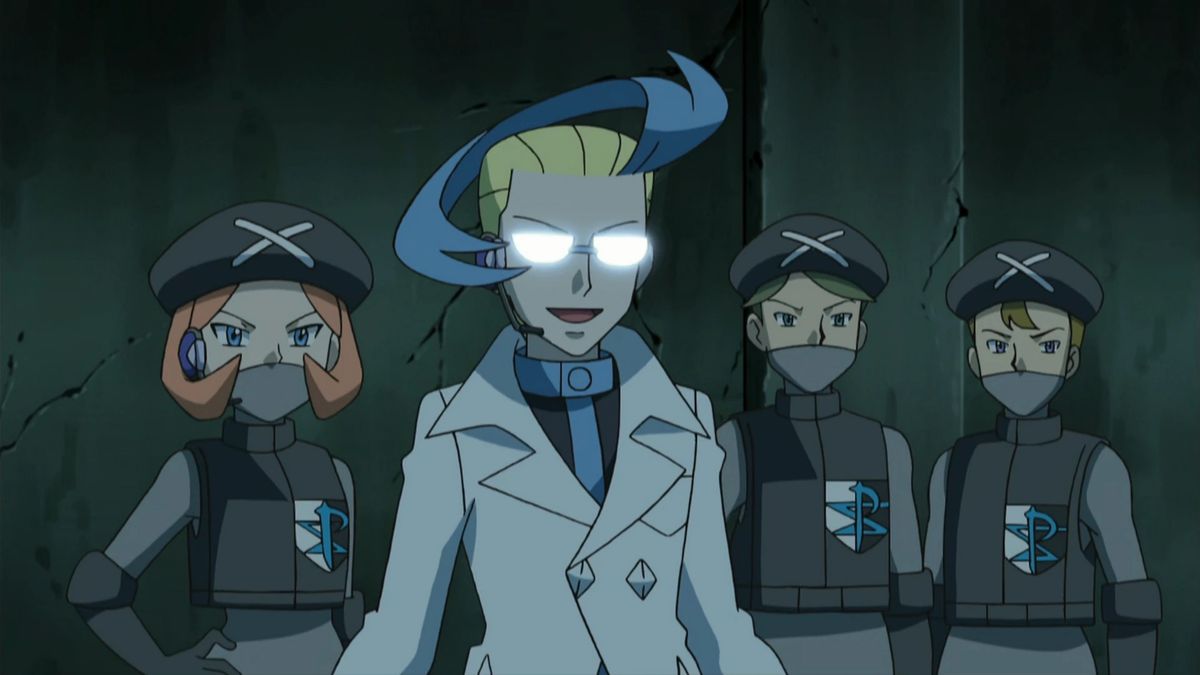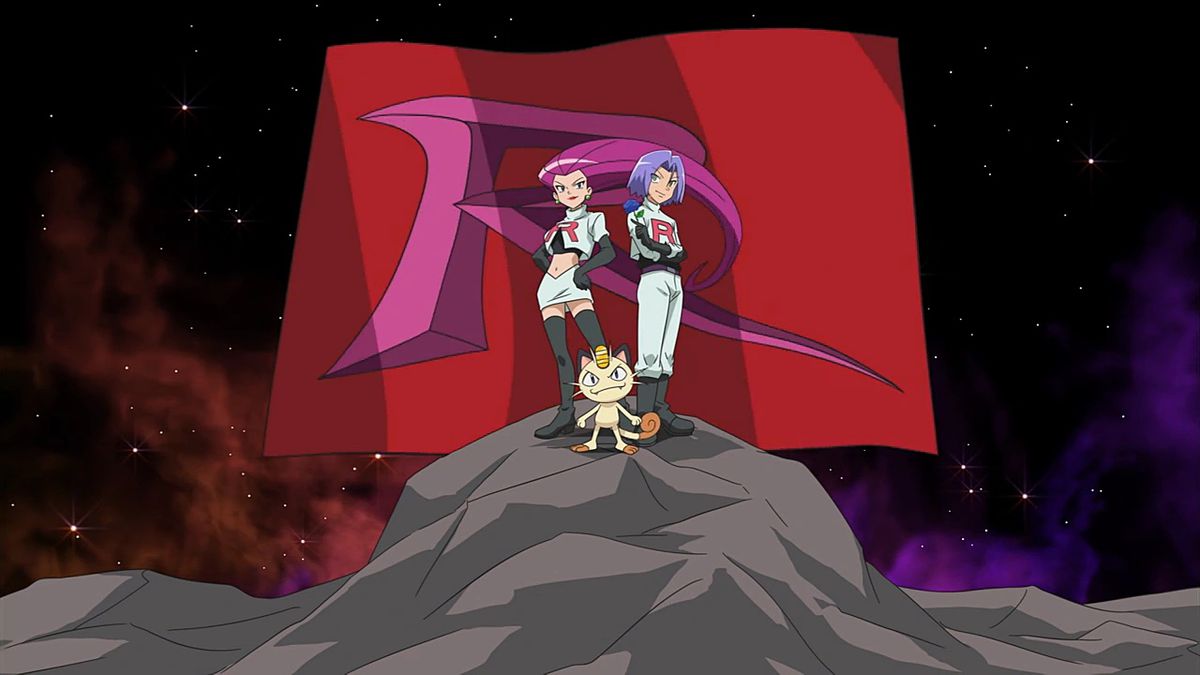The Pokémon Black and White games are lauded for their thoughtful story, ingenious antagonist team, and well-oiled gameplay. As such, their inevitable anime adaptation would have a lot to live up to. In another reality, it might have met that challenge, too. At first, the plot that the evergreen Ash Ketchum and his pals seemed to be facing in the world of Pokémon the Series: Black & White was a breath of fresh air. And it was headed to an explosive two-parter, one that promised a shake-up in a change-resistant series. The kind of event that fans would spend years talking about.
Until two episodes of the Pokémon anime suddenly rhymed with a real-life tragedy.
Ash Ketchum’s journey is one of endless restart without reinvention. With each new region, he retains Pikachu as his best bud/franchise mascot, and he gets a new team, new friends to travel around with, and a new league tournament to set his sights on. However, Black and White had brought something different to the long-running game series, and if adapted properly into the anime, they could’ve provided a similar jolt.
For over a decade, parents and PETA alike had been confounded by what they deemed as “virtual cockfighting” in the games, with fantastical laser pets sicced on one another. And Black and White’s enemy team, a cultish operation by the name of Team Plasma, declared that it sought to liberate Pokémon from humankind’s control. Now a game was finally addressing the fridge logic of Pokémon… as much as it could. Turns out that Team Plasma was evil. Battling is kind of a communal thing between Pokémon and trainer, and for the most part, the Pokémon dig it! Nonetheless, when it came time to filter the game’s world and story through Ash Ketchum, expectations were high. And in the beginning, it seemed like they might be met.
Even if the anime would never get around to completely tackling the games’ Team Plasma adventure (which wouldn’t have been surprising, as the series has always played at least a little loose with the plots of its video game source material), it was clear that big things seemed to be in motion. According to the scripts for two lost episodes, war would be had between villainous mainstays Team Rocket and the new Team Plasma, as they fought over the energy-conducting Meteonite.

Before the episodes concluded, an entire city would have been threatened by explosions and the destructive power of the Meteonite. It surely would’ve kicked off Team Plasma’s run with a bang — plus, two antagonist teams duking it out for supremacy is the kind of story that seems to come out of wish-fulfillment fanfiction rather than the actual series. “Team Plasma would actually beat Team Rocket” is the kind of thing that message board dreams are made of.
The first of these two episodes was set to air on March 17, 2011. On March 11, one of the most powerful earthquakes in recorded history occurred in the ocean just east of the Tohoku region of Japan. It caused a tsunami that residents had scant minutes to prepare for, and which would trigger the meltdown of three reactors at the Fukushima Daiichi nuclear power plant. The damage and loss of life was catastrophic. Recovery (of what could be adequately recovered) took years.
Both episodes were immediately postponed by TV Tokyo, the television station that airs the Pokémon anime in Japan, and Pokémon simply skipped to the episode ahead of these two for its intended March 17 timeslot (airing the much more innocuous “Battling for the Love of Bug-Types!”). It wasn’t alone in having its schedule altered — among other series, the critically acclaimed Puella Magi Madoka Magica would see its final two episodes pushed until April.
It wasn’t the first time that something akin to this had occurred with Pokémon. In December 1997, the alternating flashing lights in the episode “Computer Warrior Porygon” created a simultaneous health crisis and panic, with hundreds of children rushed to hospitals with seizure and nausea symptoms. The episode led to a four-month hiatus for the anime, and it would never be aired in the United States, creating an infamous buzz around the Pokémon anime even before it officially debuted in America.
But “Computer Warrior Porygon” was a pure “monster of the week” installment with little repercussions on the wider story. “Team Rocket vs. Team Plasma” parts 1 and 2, on the other hand, would have changed the arc of Team Plasma in the anime entirely. And unlike Porygon’s ill-fated episode, the clash between Team Rocket and Team Plasma would never be aired anywhere, despite being two mostly completed episodes. Their postponement stretched on until they were retconned entirely.
Team Plasma wouldn’t make itself known in the anime for almost two years, debuting officially in “Team Plasma’s Pokémon Power Plot” in February 2013. Though N, the group’s prodigal son, would be introduced a little earlier, Team Plasma’s total storyline was crammed into about 10 episodes, a significantly abridged plot to control Pokémon turned into a footnote. By appearing solely in the backend of the Black & White series and being defeated in such a short time, they never amassed the reputation that they received in the games.

It all leaves Ash with little more to do in the anime’s Black & White seasons than to provide a redux of his standard story arc with his companions. His trip through the Unova region feels lifeless, hitting the bullet points that the anime has to before ending in perfunctory fashion. With no overarching threat (and certainly not one that inspires the same kind of praise as Team Plasma’s in-game machinations) and nothing to break up the standard “make a new Pokémon/human friend and learn a lesson” and “beat a gym leader and win a game-friendly achievement” episodes, it definitely drags. Ash’s journey is pure Pokémon paint by numbers.
But the biggest losers — as always — were Team Rocket. It had been years since Ash’s perennial antagonists had made their transition from villains to affable buffoons. But in the opening episodes of Black & White, freshly dressed in black and armed with the resolve and intelligence that they’d been denied since the late ’90s, they were ready to be a competent thorn in Ash’s side once again. The anime was determined to turn Team Rocket back into a bona fide threat.
Jesse and James even stopped saying their motto (“To protect the world from devastation…”) for a while, the clearest sign of their deepening heel turn. But there ain’t enough room in Unova for two serious villainous teams, and conflict was inevitable. Team Rocket had provided little trouble for past villains (in the previous adventure, taking place in the Sinnoh region, they paled in comparison to the treatment of the reality-bending Team Galactic), but now they were prepared for war.
Perhaps the most surprising feature of the plot for the lost two-parter is just how much it presents Team Rocket as a capable terrorist group, one with both a militaristic and social presence. As such, having Team Plasma undermine Team Rocket’s plans and usurp them as Unova’s number-one bad guys builds up the new team’s credibility. It would have made an effective twist on the typical introductory plotline, which usually sees new nefarious teams emerge, only to have their plans foiled by Ash and Pikachu. They escape to lick their wounds and work toward something even more ridiculously grand, and inevitably, they’re taken down before the adventure wraps up.

Black & White is often regarded as one of the weakest bits of the Pokémon anime due to just how little seems to be going on. Team Rocket, though they had abandoned their new suits and donned their classic white costumes only two dozen episodes into Black & White, would manage to deliver on their upgraded villainy for much of the series. It was only after Team Plasma was introduced that they’d revert to their previous ways, clowning around and only modestly annoying Ash and the gang. Their entire rebirth had been for nothing.
To hope that the Black & White anime series would match up to its lauded video game counterpart is likely a futile idea. The esteem for these games has only grown since their release, and their confident approach to both world-building and gameplay mechanics is often cited when a modern Pokémon title fails to live up to its hype. And the Black & White anime would be immediately overshadowed by the series after it, XY, which presented Ash as a skillful trainer with a seemingly aged-up character design that reflected to fans all of the time he’d put into this whole Pokémon training business.
However, with a change of direction for Team Rocket, a new antagonist team that tackled a Pokémon question that had befuddled many people unfamiliar with it, and a new chance to start over, the two episodes and their place in Black & White signify a huge “what could’ve been” for the franchise. And from the looks of it, we likely won’t get answers about it any time soon.
- SEO Powered Content & PR Distribution. Get Amplified Today.
- PlatoData.Network Vertical Generative Ai. Empower Yourself. Access Here.
- PlatoAiStream. Web3 Intelligence. Knowledge Amplified. Access Here.
- PlatoESG. Carbon, CleanTech, Energy, Environment, Solar, Waste Management. Access Here.
- PlatoHealth. Biotech and Clinical Trials Intelligence. Access Here.
- Source: https://www.polygon.com/pokemon/23895988/pokemon-black-white-anime-lost-episodes-fukushima



